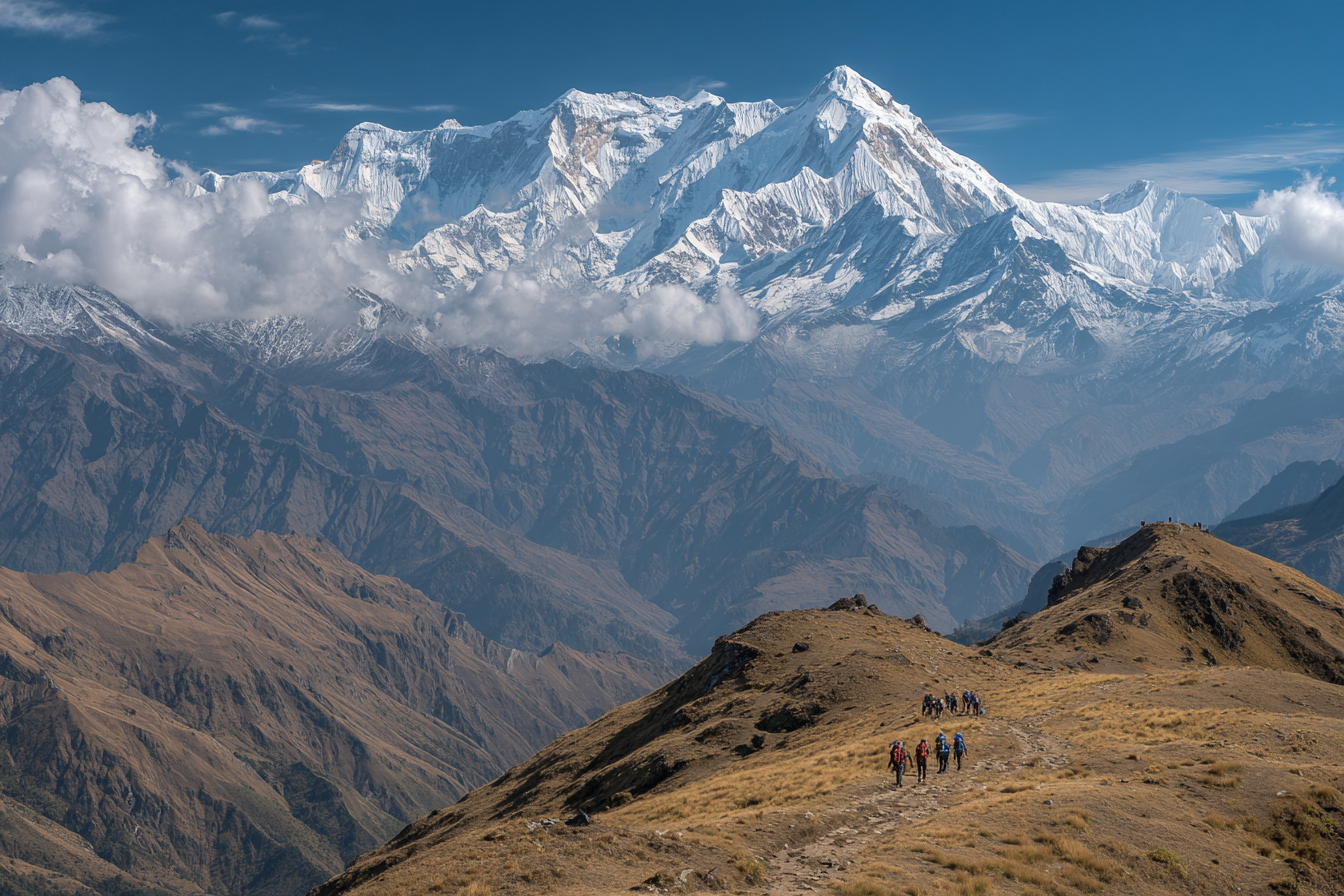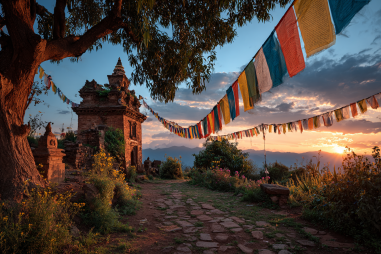Planning your days on the Annapurna Base Camp trek can make all the difference to your experience. With a diverse range of landscapes, varying elevations, and cultural encounters, having a clear itinerary helps manage your energy, acclimatize properly, and enjoy the highlights fully. Whether you’re a first-time trekker or a seasoned hiker, this detailed Annapurna Base Camp trek itinerary is tailored for all levels, with daily distances, elevation gains, rest days, and optional extensions to suit your pace and preferences.
Understanding the Trek Duration and Pace
The Annapurna Base Camp (ABC) trek typically takes about 7 to 12 days, depending on your fitness level, walking pace, and how many rest or acclimatization days you build in. Most classic itineraries recommend around 10 days to comfortably reach the base camp at 4,130 meters (13,550 feet) and return safely to Pokhara. The pace should be moderate – allowing you time to admire the breathtaking mountain views such as Annapurna South, Machapuchare (Fishtail), and Hiunchuli, without overexertion. Walking around 4-6 hours daily is advisable for most trekkers, with shorter days placed around high elevations to aid acclimatization.
Day-by-Day Itinerary Breakdown
Here’s a popular itinerary example that balances trekking days, rest, and acclimatization for a safe and rewarding experience:
- Day 1: Pokhara to Nayapul, trek to Tikhedhunga – 5-6 km, 1,540m to 1,577m
- Day 2: Tikhedhunga to Ghorepani – 11 km, 1,577m to 2,860m
- Day 3: Early morning hike to Poon Hill for sunrise, back to Ghorepani, then trek to Tadapani – 10 km, 2,860m to 2,630m
- Day 4: Tadapani to Chomrong – 7 km, 2,630m to 2,170m
- Day 5: Chomrong to Dovan – 9 km, 2,170m to 2,600m
- Day 6: Dovan to Deurali – 6 km, 2,600m to 3,230m
- Day 7: Deurali to Annapurna Base Camp – 8 km, 3,230m to 4,130m
- Day 8: Annapurna Base Camp to Bamboo – 12 km, descending from 4,130m to 2,310m
- Day 9: Bamboo to Nayapul, drive back to Pokhara – 12 km, 2,310m to 1,070m
This plan includes a sunrise hike to Poon Hill, which is a popular highlight for incredible panoramic views of the Annapurna and Dhaulagiri ranges.
Daily Distance and Elevation Gains
Daily treks vary between 5 to 12 kilometers, with elevation gains that start modestly and gradually increase as you approach higher altitudes. The longest days often involve either ascending or descending significant heights, so pacing yourself in these segments is crucial. For example, the jump from Dovan to Deurali involves about 600 meters of elevation gain, and from Deurali to ABC is the highest daily ascent. Descend days tend to be longer but with less strenuous climbs.
Recommended Rest and Acclimatization Days
Altitude sickness is a genuine concern on the ABC trek, so incorporating rest or acclimatization days is vital, especially when you start experiencing symptoms like headaches, nausea, or dizziness. Many trekkers find spending a day at Ghorepani or Chomrong helpful for acclimatization. This day can be used to explore the local villages, interact with residents, or do short hikes at lower elevation before ascending further. Rest days not only help your body adapt but also give you time to absorb the stunning surroundings.
Key Sights and Experiences Each Day
Every day on this trek offers unique views and cultural experiences. Starting in lush subtropical forests and terraced farmland, you’ll pass traditional Gurung and Magar villages where tea houses offer warm meals and friendly hospitality. The sunrise at Poon Hill is a must-see, with views of Annapurna South, Hiunchuli, Machapuchare, and Dhaulagiri towering into the sky. As the trek continues, rhododendron forests and cascading waterfalls add to the picturesque beauty. Reaching Annapurna Base Camp itself is a breathtaking reward, nestled in a Himalayan amphitheater surrounded by snow-capped peaks. Along the way, local culture, wildlife, and flora make this trek more than just physical exercise—it’s an immersive journey.
Alternative Routes and Extensions
Depending on your time and interest, there are great alternative routes and extensions around the base camp trek. For example, you can include:
- Ghorepani to Annapurna Base Camp via Chhomrong: This route is more classic and offers the Poon Hill sunrise option.
- Jhinu Danda Hot Springs: After Chhomrong, make a detour to Jhinu Danda to soak in natural hot springs—a perfect way to relax sore muscles.
- Tadapani to Ghandruk: Extend with a day hike to the traditional hilltop village of Ghandruk to experience rich local culture and mountain vistas.
- Trek towards Annapurna Sanctuary via Machapuchare Base Camp: For more adventurous trekkers, continuing beyond ABC to Machapuchare Base Camp offers less crowded trails and spectacular views.
These detours can add 1-3 days but enhance the overall trek experience significantly.
Accommodation and Meal Planning
Tea houses and lodges are plentiful along the Annapurna Base Camp trail, providing simple but comfortable accommodation. Most offer basic rooms with shared bathrooms, and meals are usually Nepalese or simple Western dishes. Planning your meals around the trek is straightforward, but it’s wise to carry snacks like energy bars and hydration salts to maintain stamina. Popular meal options include dal bhat (lentil soup with rice), noodles, soups, and momo dumplings. Water is usually sourced from streams and boiled or treated, but carrying purification tablets is recommended. Booking ahead is generally unnecessary except during peak trekking seasons (spring and autumn), but arriving earlier in popular stops ensures better room choices.
Fitness Preparation for the Itinerary
While the Annapurna Base Camp trek is accessible to many fitness levels, adequate physical preparation is key to enjoyment and safety. Cardiovascular fitness, strength, and stamina should be your focus. Ideally, start training at least 6-8 weeks before your trek with activities such as hiking, running, cycling, or stair climbing. Practice walking with a loaded backpack to simulate the trekking conditions. Incorporating strength training for legs, core, and back will help handle the elevation changes and carrying your pack. Don’t forget flexibility and balance exercises to prevent injuries. Lastly, educate yourself about altitude sickness symptoms and consider consulting a doctor about medications if necessary.
Tips for Making the Most of Each Day
To enjoy each day on the Annapurna Base Camp trek fully, consider these handy tips:
- Start early to avoid crowds and enjoy cooler temperatures.
- Hydrate frequently and eat balanced meals to maintain energy.
- Take breaks and listen to your body—don’t push through fatigue or altitude sickness symptoms.
- Use trekking poles to reduce joint strain and improve stability.
- Engage with local villagers and fellow trekkers to enrich the cultural experience.
- Carry a camera or smartphone with extra batteries—views are unforgettable.
- Keep weather changes in mind, carry layers, and be prepared for rain or cold nights.
Following these suggestions will enhance both your safety and enjoyment throughout the trek.
Personalizing Your Annapurna Base Camp Trek Itinerary
One of the beauties of trekking in the Annapurna region is the flexibility to tailor the journey to your preferences. Whether you want a quicker pace, added rest days, cultural detours, or more challenging routes, this itinerary acts as a strong foundation. Always factor in your physical condition, weather forecasts, and local advice when finalizing your plans. By adjusting the itinerary to your needs, you guarantee a memorable and rewarding adventure that matches your goals and abilities.
With this detailed Annapurna Base Camp trek itinerary for all levels, you are set to embark confidently on one of the world’s most spectacular trekking experiences. Prepare well, pace yourself, and immerse fully in the mesmerizing Himalayan landscape and culture you’ll encounter along the way.







